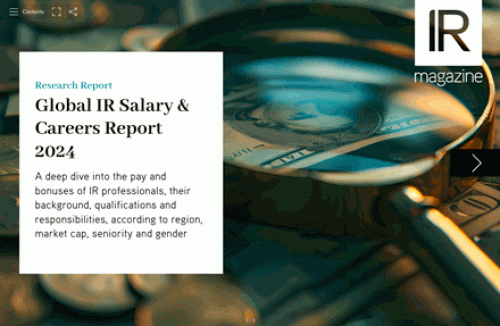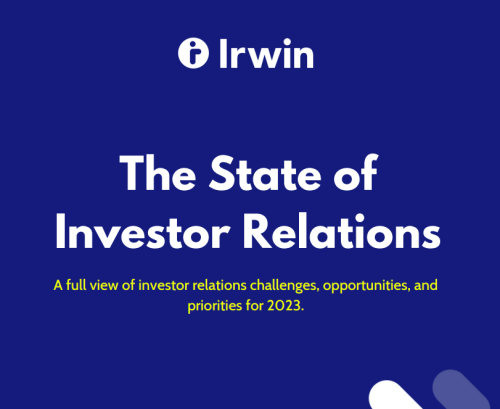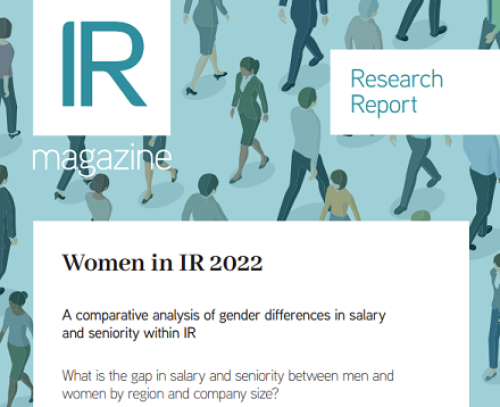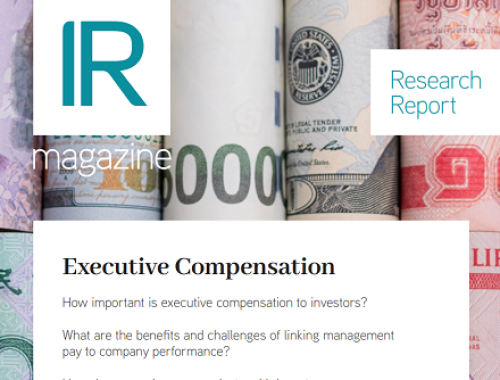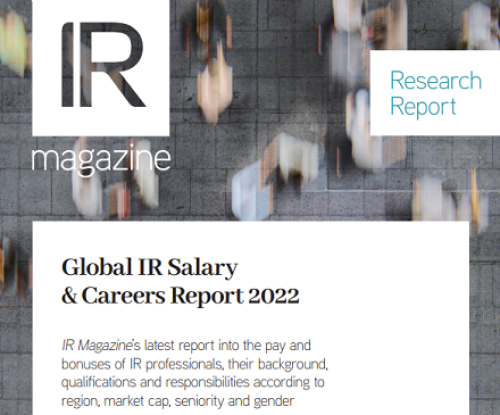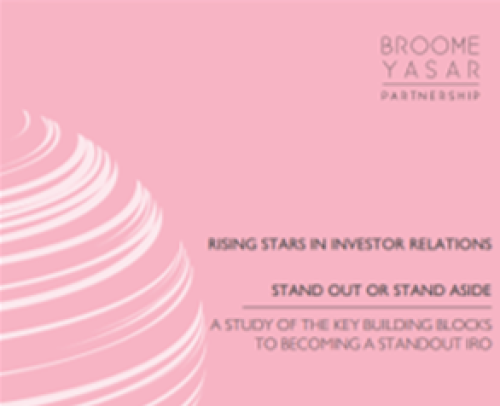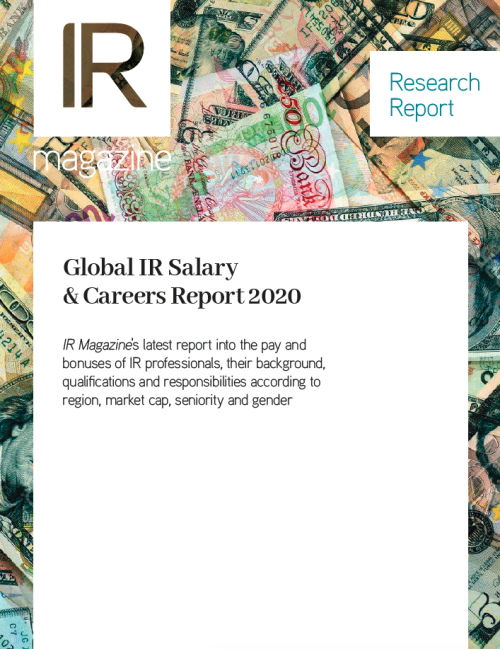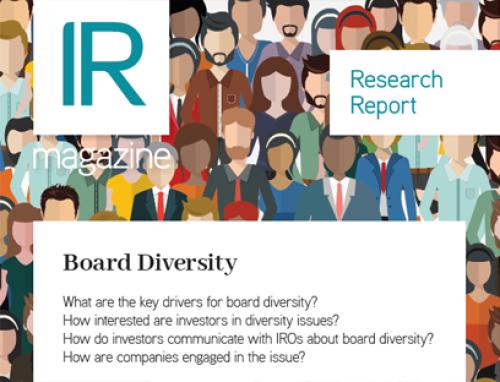IR magazine speaks with IR professionals who have made the jump into management roles
After 25 years in IR at insurance giant Aflac, the role hardly looked like a stepping-stone to the C-suite for Kenneth Janke. ‘Frankly, I was perfectly content to fill the remainder of my time until retirement in the investor relations function,’ he says. The reasons for his job satisfaction – as head of IR, Janke had plenty of autonomy and input into critical decisions – may also be what positioned him so well for a top management spot. In October 2010, Janke became executive vice president and deputy CFO at Aflac.
‘If you look at the people from IR who are now in C-suite roles, their mindsets are very broad,’ explains Theodore Dysart, vice chairman of the Chicago office of Heidrick & Struggles, an executive search firm. He says those individuals who make the leap do more than simply interface with investors: they might collaborate with the CEO to win the company a different external placement or assume diverse challenges. ‘You need to break beyond the conventional box for the IR role in order to catch the eye of executives,’ he adds.
Almost everyone believes the number of IROs entering the highest corporate echelons is growing. Blair Christie, who worked at Cisco’s IR department from 1999 until 2006, became the company’s chief marketing officer for worldwide government affairs in January 2011. Mark Begor, president and CEO of GE Capital, Retail Finance and Restructuring Operations, spent three years in IR. British Sky Broadcasting Group’s CFO Andrew Griffith once served as the company’s director of group finance, M&A and IR. And Tony Tyler, former head of IR at Cathay Pacific in Hong Kong, later became CEO.
For some CEO wannabes, IR is considered a great developmental stop along a promising career path. ‘You can’t look at a CEO and say with any certainty, He/she checked the box in investor relations,’ concedes Dysart. ‘But I am seeing CEOs and CFOs who spent one to three years in IR far more often now than I did 10 years ago.’
Many different paths
One executive who spent time in IR en route to the top is Begor, who describes IR as ‘an attractive grooming role for up-and-comers in the company.’ He also notes that five of today’s top leaders at GE completed stints in IR. ‘After going through investor relations, you think about your business almost every day through the lens of an investor,’ says Begor. ‘It’s useful when making large investments and acquisitions. You think, How will investors look at that kind of decision? Will it be good for the General Electric shareholder?’
Tom Enright, president and CEO of CIRI, observes that skills critical for an IRO are equally valued in most top executive slots. ‘In IR, you really understand what it takes for the company to succeed in the longer run,’ he says. Couple that with a strong understanding of what affects valuation and the ability to spark a good solid dialogue with the Street and the IRO’s potential for upper management is clear.
For CFOs, in particular, a stint in IR can be a way to hone communication skills – a strength that not all accounting types naturally possess. David Bryson, senior vice president and CFO at HudBay Minerals in Toronto, was once responsible for IR at Terasen, a Vancouver-based energy infrastructure firm. ‘A large part of any IRO’s role is communicating with investors and thinking about the implications of corporate strategy for a company’s financial affairs,’ he points out. ‘Having that investor relations exposure was tremendously helpful in moving beyond a more technically oriented role to a senior role in the organization.’ As HudBay’s CFO, Bryson dedicates 20 percent-30 percent of his time to IR-related tasks.
Christie followed a different path, beginning in IR immediately after graduating from college at Aqua America, a Philadelphia-based water utility, in 1994. She then joined the IR team at Cisco in 1999; by 2006, she was vice president of corporate communications and IR, and her role broadened again recently when she was named chief marketing officer. For Christie, this evolution is tied to her IR philosophy. She’s always believed that stocks aren’t bought but sold, an insight that would apply to marketing, too.
Christie also notes that dramatic changes in the communications landscape are driving companies to view investors, media and customer communications more holistically. ‘In this day and age, information is viral and accessible across many stakeholders,’ she says – yet another reason companies might view IR experience as ideal for running an entire communications function.
A panoramic view
IR can take an individual in many different directions because the job itself is so broad. ‘IR is a great way to have a bird’s-eye view of what’s going on in your company,’ says Christie. ‘I’d encourage IROs to understand their business and the transitions and trends going on in their industry. You’ll bring more value to your leadership team if you can connect the perception of Wall Street or investors to some of those trends and transitions.’
Begor makes a similar point: ‘The IR role is unique in that you see the entire company; you’re involved in the strategy and operations and you develop clear communication and financial skills.’ He therefore describes his IR experience as ‘a critical building block’ that prepared him for his CFO job at NBC, as well as his current role. Even as a chief executive, Begor continues to meet with large investors or address them at investment conferences.
Superstar IROs also seem to go beyond traditional tasks and engage in a more strategic dialogue, says Enright. ‘IROs have to understand that their value-add is on the strategic side,’ he says. ‘Being a good tactician just won’t cut it.’
Bryson agrees. He urges IROs who want to advance to get involved in strategic discussions about the company. ‘Be a soundboard for how investors might react to certain strategies being proposed,’ he suggests. ‘Don’t just take the strategy and develop a PowerPoint presentation. If you can actually be engaged in the dialogue and help to develop the strategy, you can make yourself a much more obvious candidate for the C-suite.’
Securing a corner office
For aspiring IROs, the best approach to professional advancement may be a direct one, advises Janke. A successful IRO should feel comfortable approaching the CEO or CFO to discuss eventually applying for a position in strategy or operations. ‘Responsible managements are trying to identify talent and they should be willing to have that conversation,’ he says.
Ultimately, though, the best career move might simply be to hunker down and excel at IR. Begor emphasizes that IR skills are so critical that honing them will help in almost any corporate endeavor. ‘Making things simple and clear is the hallmark of a successful investor relations leader,’ he says. ‘The skills of simplifying, clarifying and delivering a message with confidence will serve you well not only in investor relations but also for your career after IR.’
Climbing the ladder isn’t right for everyone, however, and some IROs might choose to stay put. As the IR profession continues to mature, it has demonstrated a marked increase in cachet on a resume – but the rewards of remaining in the profession have grown, too. ‘At the highest levels, IR has really been a career in and of itself, and a very rewarding one at that,’ concludes Janke.

